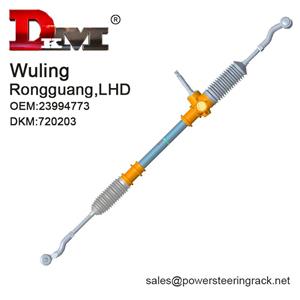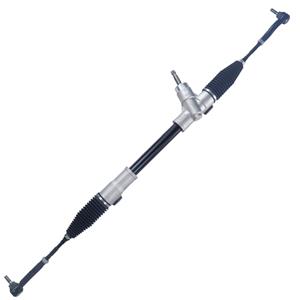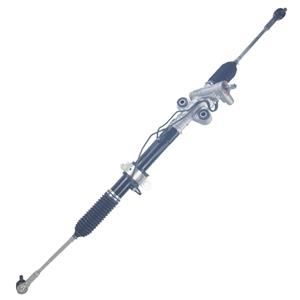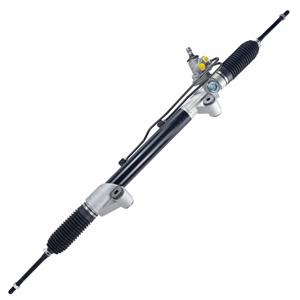Will a BMW steering rack problem cause steering stiffness?
As a world-renowned luxury car brand, BMW's steering system design and technology have always been a key guarantee of vehicle performance. Steering system performance is crucial for both driving comfort and precise control. As a key component in a vehicle's steering system, the steering rack's operating condition directly impacts vehicle handling and the driver's driving experience.
However, as vehicles age, BMW steering racks may experience malfunctions, a common problem that affects the driving experience and safety. So, can a BMW steering rack problem cause steering stiffness? In this article, we will explore in detail the working principles of BMW steering racks, common malfunction symptoms, causes of steering stiffness, and how to address and resolve these issues.

What is the function of a BMW steering rack?
1. The Function of the Steering Rack
The steering rack plays a crucial role in the steering system of BMW vehicles. As part of the power steering system, the steering rack is responsible for converting the rotational force from the steering wheel into steering movement for the wheels. It meshes with the pinion to ensure smooth power transmission and precise and smooth steering. The steering rack in BMW vehicles is typically designed to work in conjunction with a hydraulic or electric power steering system, improving driving comfort by reducing driver steering effort.
In BMW steering systems, the rack and pinion work together with great precision. The steering rack gear features a continuous tooth profile that meshes with a pinion connected to the steering wheel, ensuring accurate transmission of steering wheel rotation to the wheels. The quality and condition of the steering rack gear directly impact the overall performance of the steering system.
2. How the Steering System Works
In BMW steering systems, the rack works in conjunction with either a hydraulic or electric power steering system. Hydraulic power steering uses pressure from a power pump to reduce the effort required to turn the steering wheel. Electric power steering, on the other hand, relies on an electric motor and sensors to control steering effort using electronic signals, providing a smoother handling experience.
Whether using hydraulic or electric power steering, the steering rack plays a crucial role. When the steering wheel is turned, the pinion pushes the rack back and forth, thereby steering the wheels. Problems with the steering rack can affect the smoothness of this process, resulting in unsmooth steering.
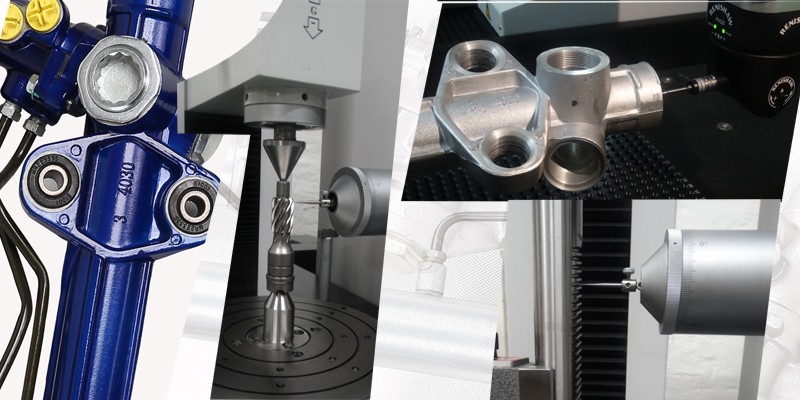
What are the common symptoms of BMW steering rack failure?
Over time, steering racks may become worn, aged, or damaged. These problems can directly affect the functioning of the steering system. Owners should always monitor any abnormal steering system behavior, especially when a BMW steering rack gear is experiencing problems. They should be aware of potential steering stiffness and other potential risks.
1. Steering becomes heavy or stiff
One of the most common symptoms of a BMW steering rack failure is steering that becomes heavy or stiff. Normally, a steering rack gear transmits power smoothly when in good condition. However, if the rack is severely worn, the meshing clearance between the teeth and the pinion increases, generating greater friction during steering. This forces the driver to exert more effort when turning the steering wheel, resulting in a heavy, even sticky, feeling.
If a BMW steering rack is severely worn or damaged, there will be noticeable resistance during steering, and the driver will experience a loss of smooth steering. This heavy steering can cause discomfort, making steering particularly difficult at low speeds or when parking.
2. Steering Wheel "Dead Zone"
A dead zone refers to the area where the wheels don't noticeably react when the steering wheel is turned. When a BMW steering rack is worn or has excessive play, the meshing between the rack and pinion becomes loose, creating a dead zone. This often manifests as the steering wheel turning within a certain angle not immediately leading to the wheels turning, requiring the driver to turn the steering wheel further to see a noticeable steering effect.
Dead zones not only affect driver control but also increase driving risks. Especially at high speeds, dead zones can cause sluggish response, making it difficult for the driver to quickly adjust the vehicle's direction, thus compromising safety.
3. Steering System Noise
Unusual noise in the steering system is another sign of a possible problem with the BMW steering rack. Normally, the meshing between the steering rack and pinion should be smooth and quiet. If the rack is worn, defective, or improperly installed, it can lead to incomplete meshing, resulting in squeaking, clicking, or knocking noises. These noises are often indicative of damaged steering rack teeth, excessive play, or poor gear meshing. If the unusual noise persists and intensifies, the BMW's steering rack gear may be severely damaged and should be inspected and replaced promptly.
4. Loss of Steering Return Function
The steering system's return function is a crucial factor in ensuring driving safety. If a BMW's steering rack malfunctions, the steering wheel may not return to its normal position after turning. This loss of return function is usually caused by a problem with the meshing of the rack or pinion, preventing the steering wheel from returning to its normal position, making operation more difficult for the driver.
This condition is often accompanied by an unusual steering wheel feel, such as a sticking sensation or uneven steering force. Prolonged use of such a damaged steering system may prevent the driver from reacting quickly, affecting driving stability.
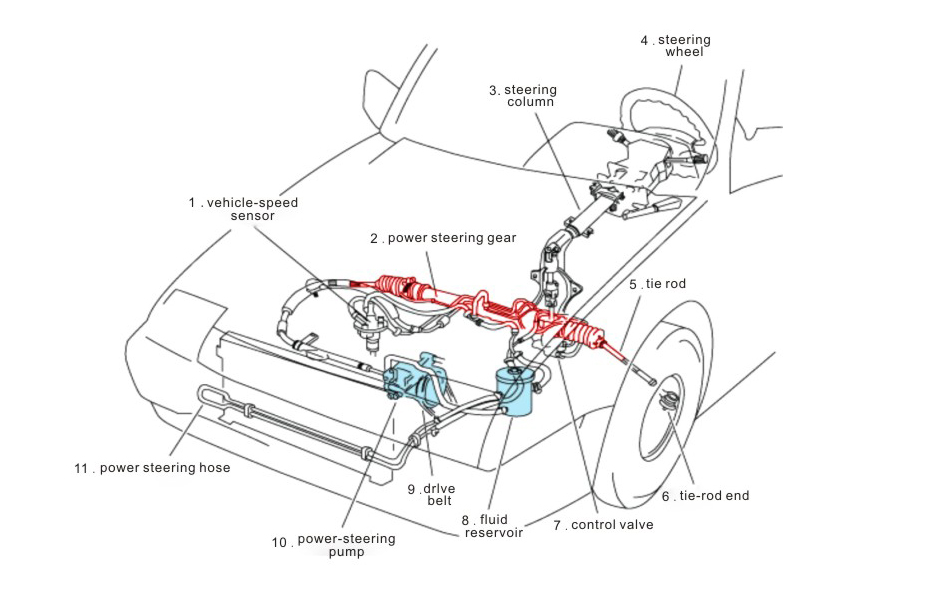
What causes steering stiffness caused by a damaged BMW steering rack?
There are many reasons why BMW steering rack problems can cause steering stiffness, and the following will analyze several aspects:
1. Rack Wear
Over time, the surface of a BMW's steering rack wears, especially under heavy steering loads. The teeth on the rack gradually wear flat, causing the meshing between the rack and pinion to become less smooth. The increased clearance between the rack and pinion leads to increased friction during power transmission, making the steering feel heavier and stiffer.
2. Insufficient Lubrication
Lubricant is crucial for the smooth operation of the steering system. If the BMW steering rack and pinion are not adequately lubricated, friction between the teeth will increase significantly, resulting in heavier steering. Especially in hydraulic power steering systems, insufficient hydraulic fluid or contaminated hydraulic fluid can lead to poor pressure transmission in the steering system, compromising steering performance.
3. Deterioration of Seals
The seals in BMW steering systems are responsible for preventing hydraulic fluid leaks and external contaminants from entering the system. If the seals are aged or damaged, the hydraulic fluid may leak or become contaminated, directly affecting the proper functioning of the steering rack. Insufficient or poor-quality hydraulic fluid can lead to unstable system pressure, making steering more difficult.
4. Improper rack and pinion installation
If the BMW steering rack and pinion are improperly installed, such as with incorrect meshing angles or excessive or insufficient clearance between parts, steering stiffness can occur. Proper installation ensures perfect meshing between the rack and pinion, ensuring smooth steering.
5. Exposing the vehicle to high loads or harsh environments for extended periods of time
The BMW steering rack and pinion may wear faster in hot, humid, or dusty environments. Especially during prolonged high-load driving, the increased stress on steering system components can easily lead to damage to the rack and pinion, ultimately causing steering stiffness.

How to address BMW steering rack issues?
If a BMW steering rack problem causes steering stiffness, owners should take immediate action. Here are some common solutions:
1. Regular inspection and maintenance
Owners should regularly inspect the BMW steering system, especially the rack and pinion. Regularly change the lubricant to ensure the hydraulic fluid is of good quality to prevent excessive wear on the steering rack gear due to insufficient lubrication.
2. Promptly replace damaged racks and pinions
If your BMW's steering rack is severely worn or damaged, replace it promptly. Choose genuine or high-quality replacement parts to ensure system stability and reliability.
3. Check the hydraulic fluid or electric power steering system
For hydraulic power steering systems, check the hydraulic fluid level and quality to ensure proper system operation. For electric power steering systems, check the working condition of the electronic sensors and motor to ensure the system is providing power assistance.
4. Adjust the meshing of the rack and pinion
When replacing a BMW steering rack gear, ensure the proper meshing clearance between the rack and pinion. Excessive clearance can cause a steering "dead zone," while insufficient clearance can increase friction and make steering heavier.
5. Avoid prolonged high-load driving
Driving habits significantly affect the lifespan of your BMW's steering rack gear. Avoid prolonged periods of extreme steering angles or driving in harsh conditions to minimize rack wear.
What are your company’s strengths?
DKM Company’s strengths lie in our long-standing operation since 1996, modern factory covering 20,000m² with 280+ CNC and heat-treatment machines, automated assembly lines, and a skilled workforce of 201–500 staff. We supply OEM-grade steering racks globally at low cost, offer customized solutions, and process large orders through wholesale, promotions, and factory-direct quotes. Our USD5–10million annual turnover reflects wide trust in our China-based manufacturing quality.

